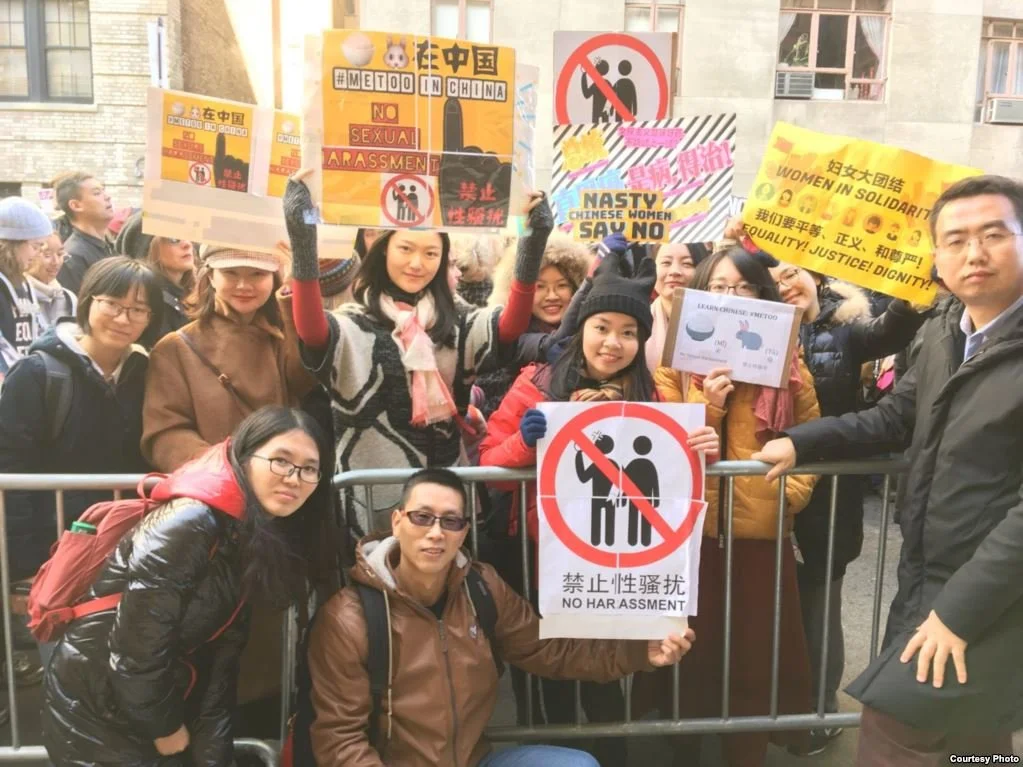Chinese spy balloon shot down off the coast of the Carolinas
A Chinese spy balloon was spotted by civilians over Montana. It floated over the United States until it was shot down by a F-22 fighter jet on Feb. 4. Photo courtesy of Chase Doak via Wikimedia Commons.
Elizabeth Murray ’26
Staff Writer
On Wednesday, Feb. 1, 2023, a Chinese surveillance balloon was spotted by civilians flying over Montana, The Washington Post reported. In the following days, the balloon made its way across the continental United States. It was shot down off the coast of South Carolina on February 4 by an F-22 fighter jet. According to NPR, reactions varied from the serious — such as Secretary of State Anthony Blinken canceling his diplomatic trip to Beijing — to the trivial, including a Saturday Night Live cold open featuring the balloon played by Bowen Yang.
CNN reported on new details that have emerged regarding the capabilities of the balloon since it was shot down. This balloon was part of a larger fleet, and reports have emerged of additional balloons floating over Latin America and the U.S., the article explained. According to Time magazine, the balloon was equipped with “multiple antennas … likely capable of collecting and geolocating communications,” a U.S. official stated. The “undercarriage” of the balloon — where the surveillance equipment is believed to be housed — was spotted among the debris, ABC News said.
Professor Calvin Chen, professor of politics at Mount Holyoke College explained that the use of the balloon comes off as unusual for a country that is widely viewed as being at the forefront of technology. “The fact that they were using balloons perplexed me because they have way more satellites, good satellites. They have an orbit that can be used for surveillance and other purposes. To be caught like this and have it shot down, and have all this kind of bad PR, is a little bit of a head-scratcher to me,” he said.
The political reaction in the U.S. has put a strain on what was already a frosty relationship between the U.S. and China. “Relations between the U.S. and China have been quite tense for some time and this will only make things worse,” Professor Andrew Reiter, associate professor of politics and international relations at Mount Holyoke College, said.
According to CNN, a spokesman for the Chinese Ministry of Defense responded to the shooting of the balloon by saying, “The U.S. used force to attack our civilian unmanned airship, which is an obvious overreaction. We express solemn protest against this move by the U.S.’ side.” This international incident caused a domestic stir in Congress as well, with senators and representatives of both parties criticizing the Biden Administration’s hesitation to shoot down the balloon, a Politico article said. According to a Reuters article on the issue, Biden addressed this in his State of the Union speech: “I am committed to work with China where we can advance American interests and benefit the world,” he said. “But make no mistake about it: as we made clear last week, if China threatens our sovereignty, we will act to protect our country. And we did.”
Looking ahead, relations between the U.S. and China are likely to remain tense. The U.S. and other countries are now on high alert for unfamiliar objects in their airspace.According to the Associated Press, in the span of eight days, four similar objects have been shot down by U.S. fighter jets. According to NBC News, China has also accused the U.S. of flying spy balloons over their airspace, meaning that the issue will likely be a point of diplomatic contention between the two countries.
Court case in China revitalizes conversations around #MeToo movement
On Oct. 1, 2022, a settlement was announced in a sexual assault case that The New York Times called “a landmark episode in China’s struggling #MeToo movement.” The case followed a former college student at the University of Minnesota, Liu Jingyao, who accused Richard Liu — a billionaire entrepreneur — of sexually assaulting her in 2018.
China aims to limit abortions to reverse population decline
Escalation in Border Conflicts Leads to Deteriorating Relationship Between India and China
Graphic courtesy of WikiMedia Commons
By Amelia Luo ’23
Staff Writer
India and China, two nuclear-armed countries, have been fighting over the disputed border in the Himalayan region, the McMahon Line, since 1914. The McMahon Line is an ill-defined border constituted by rivers, lakes and snowcaps, according to the BBC. The instability of the bodies of water causes the border to shift year to year and has led to several armed confrontations between India and China, including one this year.
On June 15, heightened tensions triggered a clash between the two countries, leaving 20 Indian soldiers and an unknown number of Chinese soldiers dead. This was the first fatal clash between India and China since 1975, according to the BBC.
The details of the clash are unclear. India accused China of “provocative military movements” near the border, while China denied these charges, claiming that it was India’s troops that engaged in “open provocation and caused the border situation to become tense,” according to The Guardian.
After the 1962 war, both sides engaged in a competition of building infrastructures such as roads, telephone lines and airstrips. This infrastructure formed what is now called the Line of Actual Control. The LAC was intended to create a demarcation line in the hopes of easing tensions between the two countries.
In 1996, China and India signed a treaty barring firearms and other explosives along the LAC. Senior Colonel Zhang Shuili, a spokesperson for the People's Liberation Army, stated that India's move “seriously violated related agreements reached by both sides, stirred up tensions in the region ... and is very vile in nature,” according to the BBC. In rebuttal, India’s government released a statement claiming that although the Indian army is “committed to maintaining peace,” they were also “determined to protect [their] national integrity and sovereignty at all costs.”
In 2019, India completed the construction of the new Darbuk-Shyok-Daulat Beg Oldi Road to a high-altitude airbase in the Ladakh region near the LAC. This road has enhanced India’s ability to move armies and organize support more quickly in the event of a conflict. China was strongly opposed to this project, as they believed that the road was harmful to the country’s economic corridor to Pakistan and Central Asia, according to Al-Jazeera.
It is unlikely either of the countries will be willing to back down. Nevertheless, the standoff could escalate tensions further if neither side gives way.
Wei Chao ’23, an international relations major, shared her theory on the Chinese government’s strategy while engaging in these conflicts. “I think the Chinese government deliberately sent off troops to test [India’s] bottom line in the border issue,” Chao said.
On Sept. 10, foreign ministers S. Jaishankar of India and Wang Yi of China reached a five-point plan in Moscow, aiming to ease tensions and resolve the crisis. That being said, this period of conflict could be the turning point of the India-China relationship.
China is one of India’s biggest trading partners; however, India has a trade deficit of 48.66 billion, which also contributes to the political tension between the two countries. With China and India’s relationship becoming more volatile, the Indian government is calling to reduce trade and economic ties with China. It recently banned more than 150 China-linked apps such as the popular video-sharing social media app, TikTok, citing security reasons. It also introduced restrictive measures on Chinese foreign direct investment.
Lasya Priya Rao Jarugumilli ’23, a double major in politics and physics, shed some light on why India might view China as such a big threat to the country’s sovereignty. “India is very diverse in every sense. The only thing that is keeping Indians together is this togetherness,” Jarugumilli said. “Every piece of land is important to the whole country. … [It] is part of the soul.”
Jarugumilli believes the aggressive response also ties back to colonialism. “[It has] not been a very long time since independence. The freedom struggle is not that far,” Jarugumilli said. “People my age, their grandparents were freedom fighters, so it is still very connected with the reality of everyday life.”
Looking at the future of the two countries’ relationship, it is very likely that the tension might de-escalate after the diplomacy engagement in Moscow, yet the tension could easily trigger a security dilemma with 50,000 troops on both sides of the LAC.
Seeing the potential increase in India’s military expenditure, Chao suggested that “it could be possible that the Chinese government wants to use the border conflict to force India to spend more on ground forces instead of the navy.” Suspicion like this exists on both sides of the conflict, potentially leading to a future harsh hit on the economic engagement between the two countries.
China’s Abuse Against Uighur Muslims Sparks Anger
China has begun to receive global criticism for its alleged persecution of Uighur Muslims. Over the past few months, harrowing reports have surfaced describing millions of Uighurs detained in what Middle Eastern news source Al Jazeera calls “the largest network of internment camps since World War II.”
Annual “China Night” show brings culture, food and dance to campus through Chinese Cultural Association
Hong Kong protests are minor success
Students for a Free Tibet raise issue of Tibetan statehood
BY GABBY RAYMOND ’20 AND VICTORIA WANG ’20
Every weekend of her childhood, Tenzin Tseyang, a Tibetan student currently attending UMass Amherst, was packed into her family car to go to the five-hour Sunday school with her Tibetan community in Boston.
“I remember arguing with my dad on the way there and not wanting to go,” Tseyang said. “But now looking back I’m so thankful he made me go because now I can speak Tibetan and I have personal connections [to Tibet] — not just by being Tibetan, but also having a strong sense of a Tibetan identity.”
Trump imposes tariffs on China for “intellectual property theft”
BY EMMA COOPER ’20
President Trump announced that the United States will impose trade restrictions on China in a speech last Thursday, according to The New York Times. The decision came after the conclusion of a seven-month governmental investigation, which concluded that Chinese companies have engaged in intellectual property theft of American technology and trade secrets.







